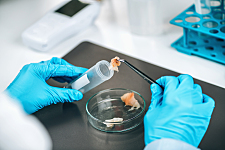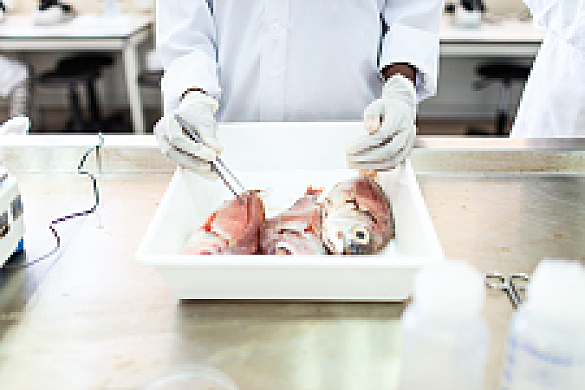
Development of economically sustainable media components for the optimal growth of cell cultures for in-vitro fish meat
In the Clean Fish project, Kaesler Nutrion GmbH and the Thünen Institute of Fisheries Ecology are working together to develop a commercially useful complete medium and media components specifically for the growth of in-vitro fish cells.

Despite fisheries and aquaculture, the growing worldwide demand for fish is necessitating alternative approaches to food production. One option is in-vitro fish meat from cell cultures. In the case of animal cell cultures, components of the liquid media essential for successful cell growth tend to be highly complex and costly. The necessary growth factors and hormones in the media, and particularly animal serum, are a particularly critical point.
Fish from the sea are basically a healthy source of food. However, free-swimming fish can contain heavy metals and organic pollutants. Certain species in some regions are badly affected. High quantities of pollutants collect in the tissues of long-living and fatty predatory fish species in particular.
Fish cells are a special case in the field of animal cell culture techniques. Their physiological characteristics are well-suited to in-vitro cultivation, and are very distinct from the mammal cells which are frequently used. The project aims to develop a commercially useful complete medium and media components specifically for the growth of in-vitro fish cells.
The development of a substitute in the form of hydrolysates of vegan origin to replace the animal serum which was previously needed, along with the development of other nutrients to be added, offers enormous potential, particularly with a view to use in cellular agriculture.
The project will also produce an energy and carbon footprint for the media production and extrapolate this to cover the entire process.

This project focuses on crisis management and transformation to a greener and digital economy and is supported by our heroine Ronja.